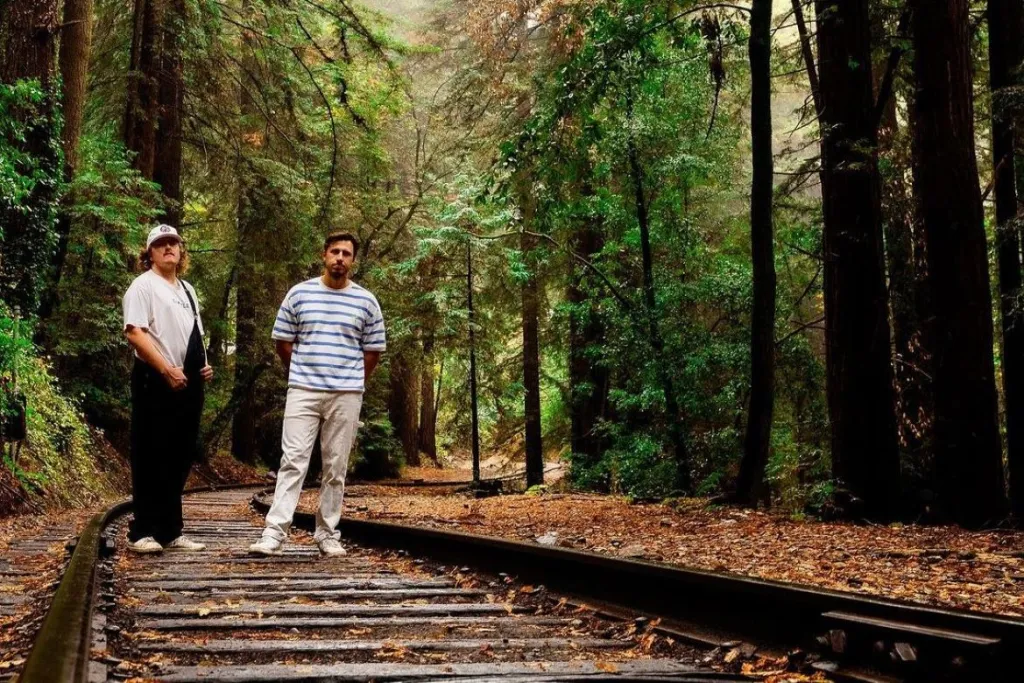WARNING: The following contains major spoilers for Resident Evil: Infinite Darkness, now streaming on Netflix.
One of the things fans were hoping for in Resident Evil: Infinite Darkness was nods to the video games that came before. With the four-episode series set in 2006, in between Resident Evil: Degeneration and Resident Evil 5, a couple of these Easter eggs were somewhat predictable, but there's still plenty here to dissect.
Leon and Claire's Dynamic
Resident Evil 2's heroes have changed big-time, as Leon is no longer a rookie cop in Raccoon City; he's now a government agent working directly for President Graham. Meanwhile, Claire's gone from looking for her brother, Chris, to being a chief in the TerraSave humanitarian organization, seeking out bioweapon and environmental conspiracies to expose.
Interestingly, both characters are voiced by the folks from 2019's Resident Evil 2 remake; Nick Apostolides reprises his role as Leon, with Stephanie Panisello back as Claire. Leon looks the same apart from now wearing a G-Man suit, but Claire keeps her iconic red leather jacket. Their personalities are the same, with Claire feisty and filled with clapbacks while Leon maintains awful one-liners, such as joking about having cheese when mutated rats attack.
The Raccoon City Debacle
Resident Evil 2 saw citizens being turned into zombies after a bioweapon created by the Umbrella Corporation infected the masses. Leon tried to rescue people on his first day of duty, eventually running into a desperate Claire. The events scarred them, with Leon and Jason discussing their PTSD en route to Shanghai to investigate a hack and chemical warfare by China.
Jason admits the city was sterilized by the government (aka nuked) and a cover-up ensued. This ties into Resident Evil 4, where the public was still in the dark over zombies, mutants and bioweapons, with companies like Umbrella playing God. To top it off, the piano score is a homage to Resident Evil 2's safe room, which acted as an isolated, emotional space akin to what Jason and Leon share in this stealthy submarine.
Ashley Graham's Rescue
Resident Evil 4 saw Leon head to Europe to rescue Graham's daughter, Ashley, who was taken by a cult to be impregnated with a monster. Leon fought off crazed villagers and other creatures to bring her home, with the President rewarding him afterward with this special operative position.
President Graham mentions he is forever "indebted" to Leon for his heroics, as he couldn't stand to lose his daughter to the Los Illuminados extremists. We also see a picture of Ashley wearing her same outfit on the Oval Office desk, with this forged trust encouraging the Commander-in-Chief to send Leon to China to figure out why they launched a terrorist attack that created zombies inside the White House.
The Lethal Weapons
There are quite a few firearms from the games that make quick cameos, which staunch fans will easily be able to spot. As Jason, Leon and Shen arrive at their Chinese safehouse, we see the G17 and M19 handguns lying on the table, with Leon slowly eyeing them. They even have the same custom grips seen down the line in Resident Evil 7.
In addition, when Leon fights the mutated Jason in the finale, he uses his iconic Lightning Hawk magnum from Resident Evil 2. He also rocks the signature bazooka seen in many games to try to bring Secretary Wilson's lab down and stop Jason from going to the surface to wreak havoc. This, in and of itself, is a nod to the games whenever players have to fight a big boss.
Tricell's Logo Appearing
This logo appears in the end when a representative finds Wilson and offers him a serum to cure him after Jason infects the military boss with a virus. It's spotted on the agent's suitcase, which foreshadows Resident Evil 5 where Tricell basically becomes the new Umbrella, creating bio-weapons and causing trouble in Africa.
This suitcase confirms that Wilson has secretly partnered with them all along to create undead super-soldiers to sell on the black market, allowing them to destabilize nations and then supply them with a cure in a tale of war economics.
About The Author

